Topic Question Set
Q 1
:
An effective power of a combination of 5 identical convex lenses which are kept in contact along the principal axis is 25 D. Focal length of each of the convex lens is [2024]
20 cm
50 cm
25 cm
500 cm
(1)
We know that
As given all lenses are identical, 5P = 25 D
Q 2
:
Given below are two statements:
Statement (I): When an object is placed at the centre of curvature of a concave lens, image is formed at the centre of curvature of the lens on the other side.
Statement (II): Concave lens always forms a virtual and erect image.
In the light of the above statements, choose the correct answer from the options given below: [2024]
Statement I is false but Statement II is true.
Both Statement I and Statement II are false.
Statement I is true but Statement II is false.
Both Statement I and Statement II are true.
(1)
Statement-I is False. (Image is formed on the same side, not on the other side).
Statement-II is True. (As object is real, its virtual and erect image is formed).
Q 3
:
A biconvex lens of refractive index 1.5 has a focal length of 20 cm in air. Its focal length when immersed in a liquid of refractive index 1.6 will be: [2024]
-16 cm
-160 cm
+160 cm
+16 cm
(2)
Q 4
:
For the thin convex lens, the radii of curvature are 15 cm and 30 cm respectively. The focal length of the lens is 20 cm. The refractive index of the material is [2024]
1.4
1.2
1.5
1.8
(3)

Q 5
:
The position of the image formed by the combination of lenses is [2024]
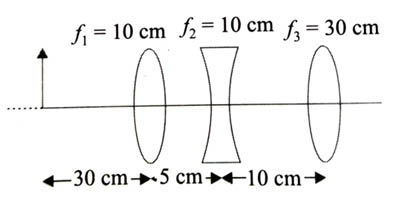

30 cm (left of third lens)
15 cm (right of second lens)
15 cm (left of second lens)
30 cm (right of third lens)
(4)
Here we will use the lens formula three times, for lens 1
For 2nd lens
For 3rd lens:
So will be 30 cm.
Q 6
:
The following figure represents two biconvex lenses and having focal length 10 cm and 15 cm respectively. The distance between and is [2024]
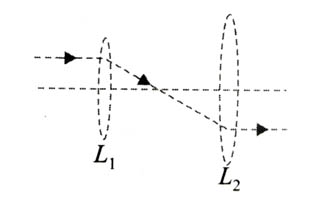

10 cm
15 cm
25 cm
35 cm
(3)
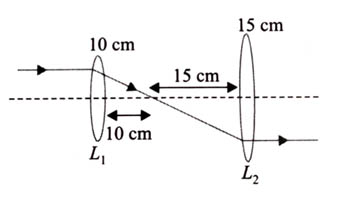
cm, Paraxial parallel rays pass through focus and ray from focus of convex lens will become parallel.
Q 7
:
The distance between object and its two times magnified real image as produced by a convex lens is 45 cm. The focal length of the lens used is __________ cm. [2024]
(10)

By lens formula,
Q 8
:
In an experiment to measure the focal length () of a convex lens, the magnitude of object distance () and the image distance () are measured with reference to the focal point of the lens. The plot is shown in figure.
The focal length of the lens is _____ cm. [2024]
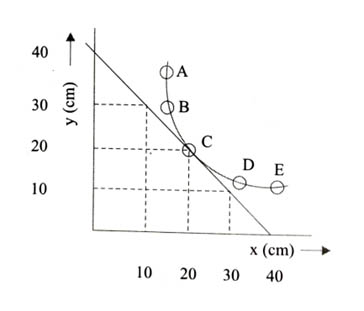

(20)
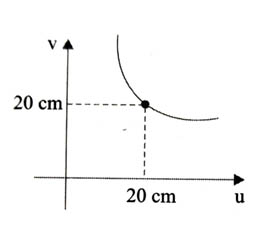
Here,
From the focal point,
Newton's formula
Q 9
:
Light from a point source in air falls on a convex curved surface of radius 20 cm and refractive index 1.5. If the source is located at 100 cm from the convex surface, the image will be formed at _____ cm from the object. [2024]
(200)
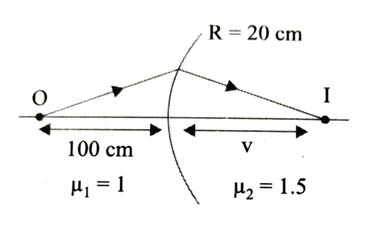
Distance from object
Q 10
:
The distance between object and its 3 times magnified virtual image as produced by a convex lens is 20 cm. The focal length of the lens used is ______ cm. [2024]
(15)


